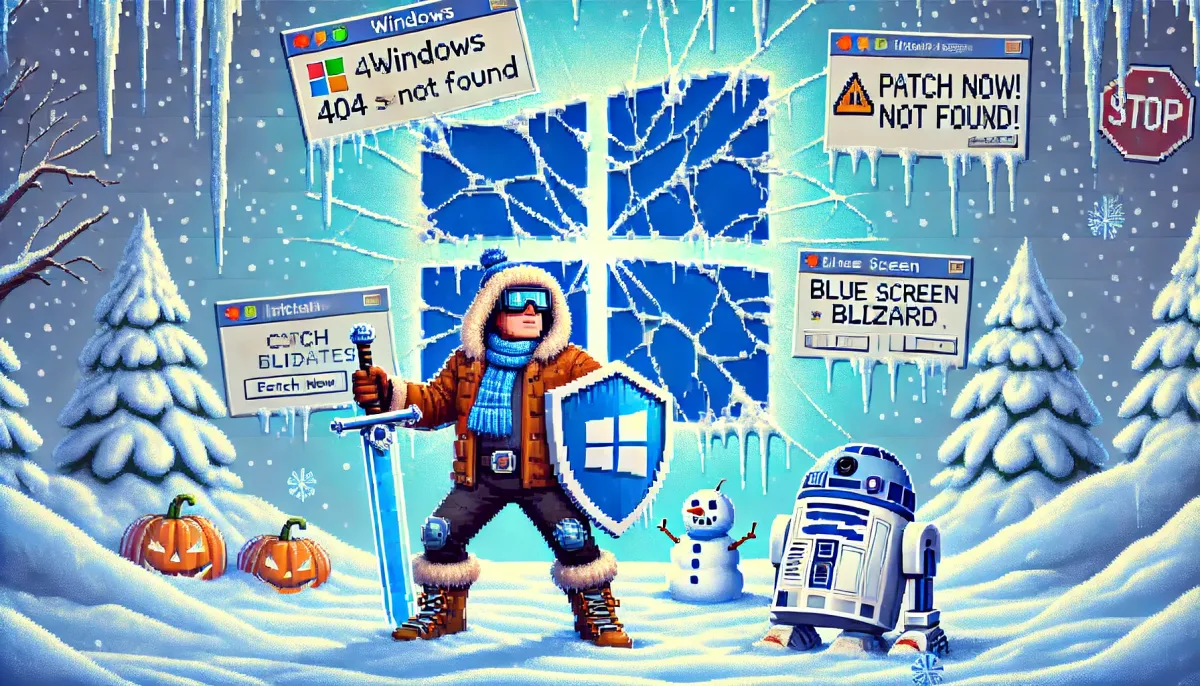Top Vulnerabilities Exploited by Threat Actors: December 2024 Analysis
These vulnerabilities include remote code execution (RCE) flaws in Windows components such as Hyper-V, Remote Desktop Services, and the Local Security Authority Subsystem Service (LSASS)

TL;DR
-
CVE-2024-49138 (Windows Common Log File System Driver Elevation of Privilege Vulnerability)
- This zero-day vulnerability has been actively exploited in the wild. It allows attackers to gain SYSTEM privileges through a heap-based buffer overflow.
-
CVE-2024-49117 (Windows Hyper-V Remote Code Execution Vulnerability)
- This vulnerability allows attackers to escape from a virtual machine to the hypervisor, potentially leading to remote code execution.
-
CVE-2024-49112 (Windows Lightweight Directory Access Protocol (LDAP) Remote Code Execution Vulnerability)
- This critical RCE vulnerability in LDAP can be exploited via specially crafted LDAP calls, leading to code execution within the LDAP service.
-
CVE-2024-49126 (Windows Local Security Authority Subsystem Service (LSASS) Remote Code Execution Vulnerability)
- This vulnerability allows remote code execution in LSASS without requiring user interaction or privileges.
-
CVE-2024-49106 (Windows Remote Desktop Services Remote Code Execution Vulnerability)
- This vulnerability allows remote code execution in Remote Desktop Services, requiring an attacker to win a race condition.
Research Summary
In the past week, several critical vulnerabilities have been identified, particularly in Microsoft's December 2024 Patch Tuesday release. These vulnerabilities include remote code execution (RCE) flaws in Windows components such as Hyper-V, Remote Desktop Services, and the Local Security Authority Subsystem Service (LSASS). Notably, CVE-2024-49138, an elevation of privilege vulnerability in the Windows Common Log File System (CLFS), has been actively exploited in the wild. The exploitation of these vulnerabilities by threat actors typically involves sophisticated tactics, techniques, and procedures (TTPs) aimed at gaining unauthorized access, executing arbitrary code, and escalating privileges.
Threat actors are leveraging these vulnerabilities to conduct various malicious activities, including ransomware attacks and lateral movement within networks. The exploitation methods often involve specially crafted inputs to trigger the vulnerabilities, leading to severe consequences such as system compromise and data breaches. Mitigation strategies include applying the latest patches, implementing robust access controls, and conducting regular security audits to identify and remediate vulnerabilities promptly.
The analysis reveals that threat actors are increasingly targeting critical services and infrastructure, exploiting these vulnerabilities to gain a foothold in networks and escalate their privileges. This trend underscores the importance of timely patch management and the implementation of comprehensive security measures to protect against these evolving threats.
Organizations must prioritize the application of patches, particularly for vulnerabilities like CVE-2024-49138, CVE-2024-49117, and CVE-2024-49112, to mitigate the risk of exploitation. Additionally, enhancing monitoring and detection capabilities, conducting regular security audits, and educating IT staff on the latest threats are crucial steps in defending against these sophisticated attacks.
Findings
-
CVE-2024-49138 (Windows Common Log File System Driver Elevation of Privilege Vulnerability)
- This zero-day vulnerability has been actively exploited in the wild. It allows attackers to gain SYSTEM privileges through a heap-based buffer overflow.
- Importance: High
- Recency: December 2024
- Relevance: Critical for systems using Windows CLFS.
- Source: Rapid7 Blog
-
CVE-2024-49117 (Windows Hyper-V Remote Code Execution Vulnerability)
- This vulnerability allows attackers to escape from a virtual machine to the hypervisor, potentially leading to remote code execution.
- Importance: High
- Recency: December 2024
- Relevance: Critical for environments using Hyper-V.
- Source: Rapid7 Blog
-
CVE-2024-49112 (Windows Lightweight Directory Access Protocol (LDAP) Remote Code Execution Vulnerability)
- This critical RCE vulnerability in LDAP can be exploited via specially crafted LDAP calls, leading to code execution within the LDAP service.
- Importance: High
- Recency: December 2024
- Relevance: Critical for systems using LDAP.
- Source: Rapid7 Blog
-
CVE-2024-49126 (Windows Local Security Authority Subsystem Service (LSASS) Remote Code Execution Vulnerability)
- This vulnerability allows remote code execution in LSASS without requiring user interaction or privileges.
- Importance: High
- Recency: December 2024
- Relevance: Critical for systems using LSASS.
- Source: Rapid7 Blog
-
CVE-2024-49106 (Windows Remote Desktop Services Remote Code Execution Vulnerability)
- This vulnerability allows remote code execution in Remote Desktop Services, requiring an attacker to win a race condition.
- Importance: High
- Recency: December 2024
- Relevance: Critical for systems using Remote Desktop Services.
- Source: Rapid7 Blog
Breaches and Case Studies
- (Date - 2024-12-10) Microsoft December 2024 Patch Tuesday
- Description: Microsoft addressed 70 vulnerabilities, including 16 critical RCE vulnerabilities and one zero-day actively exploited in the wild.
- Actionable Takeaways: Apply the latest patches immediately, especially for critical vulnerabilities like CVE-2024-49138, CVE-2024-49117, and CVE-2024-49112.
- References:
- (2024-12-10) - Rapid7 Blog
Recommendations, Actions, Suggested Pivots, Forecasts and Next Steps..
(Subscribers Only)





